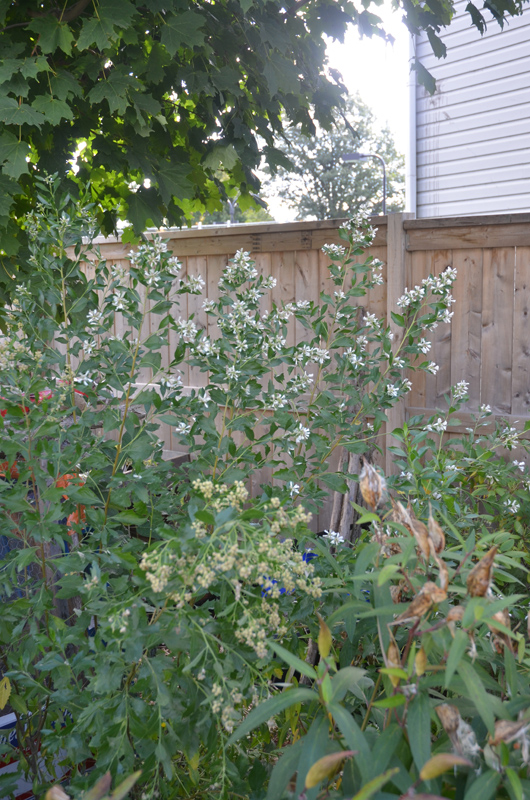| General Description | Baccharis halimifolia is a fast growing shrub that grows in marshy or acidic areas, and is commonly found along the coast. It grows to be 4 m tall and 2 m wide. It also has an unusual flowering technique that resembles a dandelion. Its waxy leaves have a silver to grey underside. The bark on Baccharis halimifolia plant becomes woody with age. |
| ID Characteristic | The petiole on the Baccharis halimifolia has a grey to green colour. The leaves can also be grey. When the plant is flowering, it has silk-like hairs that come out of its fruit, much like a dandelion. Baccharis halimifolia usually has one main trunk that holds randomly alternating branches, covered by ridge-like bark. |
| Shape | An upright bushy shrub with branched stems that come off of a main shoot, and become woody with age. |
| Landscape | It is considered an invasive species, so it is not frequently used when planning a landscape. It is often found in marshy areas, but is able to live comfortably in dry climates. B. halimifolia does well in full sun as well as partially shaded areas. |
| Propagation | The "pappus" is a group of hairs that enable the seed to float in the wind, travelling up to 140 meters away from the parent plant. This plant also has both male and female flowers on separate plants. Male plants are generally smaller, and the flower is more yellow, while the females flower is more white. |
| Cultivation | This plant prefers full sun, yet can tolerate partial shade. However, it thrives best in a sandy loam, acidic soils or in a constantly wet area when fully established. It is also highly drought and salt-tolerant, and tolerates soils with low nutritional value. |
| Pests | . |
| Habitat | Baccharis halimifolia is found in acidic marshy areas or along coastlines. It is also thrives in dry low water environments such as open fields. |
| Bark/Stem Description | The bark is plated and ridged, but only becomes woody when the plant is mature. |
| Leaf Description | Obovate to oblong, 2.5 - 7.5 cm long, 1.5 cm wide. Leaves are alternate, simple and coarsely toothed. The upper leaf surface is dark-green with both surfaces resinous-dotted with a bright grey to green periole. |
| Flower Description | The female plant bears cotton fruits that survive into late autumn, it is a self-seeder with separate male and female plants that flower in late autumn. |
| Fruit Description | Fruits (cypselae or achenes) are one-seeded, cylindrical, 1.3 - 1.8 mm long, and topped by the “pappus" which elongates between 10 - 12 mm. |
| Colour Description | Foliage keeps a constant green/silver colour throughout the autumn season. It starts off herbaceous, and it matures to a brown ridged-like bark. Fruit is small, white, oval-shaped, and stays in a hard dry shell. |
| Texture Description | Plant is smooth and herbaceous, but becomes coarse and woody with a rough bark as it ages. Mature stems feel woody, and the leaves have a waxy texture on both sides. |

